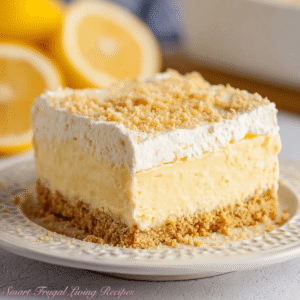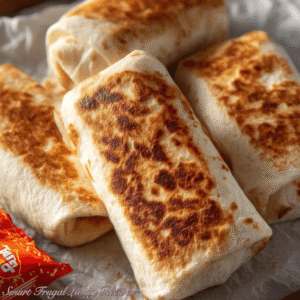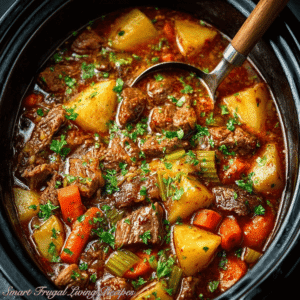Introduction
If you’ve ever been to Texas Roadhouse, you know their salmon is one of the standout dishes on the menu. Juicy, flaky, and packed with flavor, it’s the kind of meal that feels both hearty and fresh at the same time. The good news? You don’t have to head out to the restaurant to enjoy it—you can recreate a Texas Roadhouse Style Baked Salmon right in your own kitchen with just a handful of pantry ingredients.
This recipe combines the best of what makes the Texas Roadhouse salmon so irresistible: a bold seasoning blend, a touch of smokiness from paprika and cayenne, and the brightness of fresh lemon juice to balance it all out. The result is a tender, oven-baked salmon fillet that’s every bit as delicious as the restaurant version, if not more.
What I love most about this recipe is how simple it is to prepare. With less than 10 minutes of active prep time, you can have a restaurant-quality meal ready in under 30 minutes. It pairs beautifully with just about any side—whether you go for classic mashed potatoes, buttery rolls, or a lighter option like steamed vegetables or a crisp salad.
If you’re a fan of restaurant copycat recipes, you might enjoy browsing CopyKat Recipes for more inspiration. And for a deep dive into why salmon is such a nutritious choice, Harvard T.H. Chan School of Public Health offers excellent insights into its health benefits. But for now, let’s focus on making a baked salmon that’s just as mouthwatering as what you’d order at Texas Roadhouse.
Texas Roadhouse Style Baked Salmon Recipe

Texas Roadhouse Style Baked Salmon
Ingredients
Method
- Preheat the oven: Set oven to 400°F (200°C). Line a baking sheet with parchment paper or lightly grease with oil.
- Prepare the spice rub: In a small bowl, mix garlic powder, onion powder, paprika, oregano, cayenne, salt, and black pepper.
- Season the salmon: Pat salmon fillets dry with paper towels. Brush with olive oil on both sides, then coat generously with the spice blend.
- Bake the salmon: Place fillets on the prepared baking sheet. Bake for 15–18 minutes, or until salmon flakes easily with a fork and reaches an internal temperature of 145°F (63°C).
- Finish with lemon: Remove salmon from the oven, squeeze fresh lemon juice over the top, and garnish with parsley.
- Serve: Plate with lemon slices on the side and enjoy hot.
Notes
- Cooking time depends on fillet thickness—thicker cuts may need a few extra minutes.
- For extra flavor, marinate the salmon with the spice blend and oil for 30 minutes before baking.
- If you like a caramelized top, broil the salmon for the last 1–2 minutes.
Advanced Techniques to Elevate Your Texas Roadhouse Style Baked Salmon
Marinating for Maximum Flavor
While this recipe is already flavorful, marinating the salmon for 30 minutes before baking takes it to another level. Mix the olive oil, spices, and lemon juice into a paste, coat the fillets, and let them rest. The seasoning penetrates deeper, making every bite more vibrant.
Adding a Honey Glaze for Sweet Heat
For a Texas Roadhouse-inspired twist, whisk together 1 tablespoon honey with the lemon juice and brush it over the salmon in the last few minutes of baking. The honey caramelizes slightly, creating a glaze that balances the cayenne pepper’s kick with a touch of sweetness.
Using Fresh Garlic Instead of Powder
Garlic powder works perfectly for quick seasoning, but if you have fresh garlic, mince a clove and sauté it briefly in olive oil before brushing it over the salmon. It adds depth and a more pronounced garlic flavor.
Cooking on a Cast-Iron Skillet
For extra texture, sear the salmon in a hot cast-iron skillet for 2 minutes per side before transferring it to the oven. This creates a crispy crust while keeping the interior moist and flaky.
Serving with Compound Butter
Top the hot baked salmon with a pat of garlic-herb butter right before serving. As it melts, it adds richness and makes the dish feel restaurant-worthy.

Storage, Shelf Life, and Maintenance Tips
Refrigerating Leftovers
Store any leftover salmon in an airtight container in the fridge for up to 3 days. To keep it moist, add a splash of lemon juice before reheating.
Freezing for Later
Yes, you can freeze baked salmon. Wrap fillets tightly in plastic wrap, then place in a freezer-safe bag. Freeze for up to 2 months. Defrost in the fridge overnight before reheating.
Reheating Without Drying Out
Microwaving can dry salmon quickly. Instead, reheat in the oven at 275°F (135°C) for about 10 minutes, or until warmed through. Cover loosely with foil to keep moisture in.
Enjoying Cold as Leftovers
Baked salmon is surprisingly delicious cold! Flake it into salads, grain bowls, or wraps the next day for a fresh meal without reheating.
Preventing Overcooking
The biggest mistake with salmon is leaving it in the oven too long. Always start checking for doneness at the 12-minute mark. Remember—it will continue cooking slightly after you remove it from the oven.

Dietary Adaptations and Substitutions
Making It Dairy-Free and Paleo
This recipe is naturally dairy-free and works for Paleo diets when paired with vegetable sides. Just make sure to use high-quality olive oil.
Keto-Friendly Adjustments
This salmon is already keto-friendly, but for added fat, drizzle with extra olive oil or serve with avocado slices.
Reducing the Spice Level
If you’re not a fan of heat, simply cut the cayenne in half or omit it entirely. The paprika and oregano still give the salmon plenty of flavor.
Boosting Protein with a Side
Pair this baked salmon with a protein-packed side dish like quinoa or lentils for an even more filling and nutritious meal.
Vegetarian Adaptation
For non-salmon eaters, the spice rub works wonderfully on roasted cauliflower steaks or portobello mushrooms. It creates a smoky, savory main dish that complements similar sides.

FAQs About Texas Roadhouse Style Baked Salmon
Can I Use Frozen Salmon Fillets?
Yes! Just thaw them completely in the fridge overnight before cooking. Pat them dry to ensure the seasoning sticks well.
Do I Have to Bake It, or Can I Grill Instead?
Absolutely—you can grill the salmon over medium heat for 4–5 minutes per side. The seasoning blend works beautifully with a smoky grilled finish.
How Do I Know When Salmon Is Done?
Salmon is done when it flakes easily with a fork and reaches 145°F (63°C) internally. If you prefer slightly more tender salmon, remove it at 135–140°F and let it rest.
Can I Use This Seasoning Blend on Other Fish?
Definitely! This spice rub pairs well with trout, cod, or tilapia. Adjust cooking time depending on the thickness of the fillets.
What Sides Go Best with Texas Roadhouse Style Salmon?
Classic pairings include baked potatoes, rice pilaf, roasted vegetables, or a crisp garden salad. For a true Texas Roadhouse vibe, serve with buttery rolls on the side.

Conclusion & Final Thoughts
This Texas Roadhouse Style Baked Salmon recipe is the perfect blend of bold flavor, simple preparation, and restaurant-quality results. It’s proof that you don’t need a long list of fancy ingredients to make a dish that feels special—just salmon, spices, and fresh lemon.
What I especially love is how versatile it is. Whether you’re serving it for a quick weeknight dinner or plating it up for a more formal gathering, it always impresses. You can keep it classic with the original seasoning blend, or get creative with honey glazes, compound butters, or grilling instead of baking.
The health benefits of salmon only make this recipe more appealing—it’s rich in omega-3 fatty acids, high-quality protein, and essential nutrients, making it a dish that’s as nourishing as it is delicious.
So the next time you’re craving that restaurant-style salmon but want the comfort of a home-cooked meal, give this recipe a try. I have a feeling it’ll become one of your regular go-to dinners, just as it has in my own kitchen.



